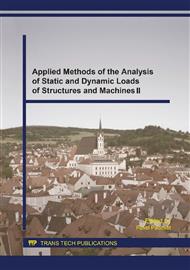p.95
p.99
p.105
p.109
p.113
p.117
p.121
p.125
p.129
X-Ray Diffraction and Barkhausen Noise Diagnostics of Thick Welds Prepared by Metal Active Gas and Laser Welding
Abstract:
Non-destructive methods for detection and measurement of residual stresses (RS) have been increasingly used in the last few years. The paper outlines the capability of Barkhausen noise analysis (BNA) for evaluation of real structure changes and RS on cross-section of welds due to welding of ferromagnetic plates compared with X-ray diffraction (XRD). The purpose of this study is to evaluate the RS distribution of specimens joined using by high power diode laser and metal active gas (MAG) welding that can be used for quantitative analysis of macro and micro level RS separately. The principal advantages of BNA over XRD as a tool for RS analysis and real structure characterisation are that it is mobile, faster with more facile carrying out and hence BNA is frequently used for continuous monitoring of RS in industrial processes.
Info:
Periodical:
Pages:
113-116
Citation:
Online since:
February 2016
Authors:
Price:
Сopyright:
© 2016 Trans Tech Publications Ltd. All Rights Reserved
Share:
Citation:


